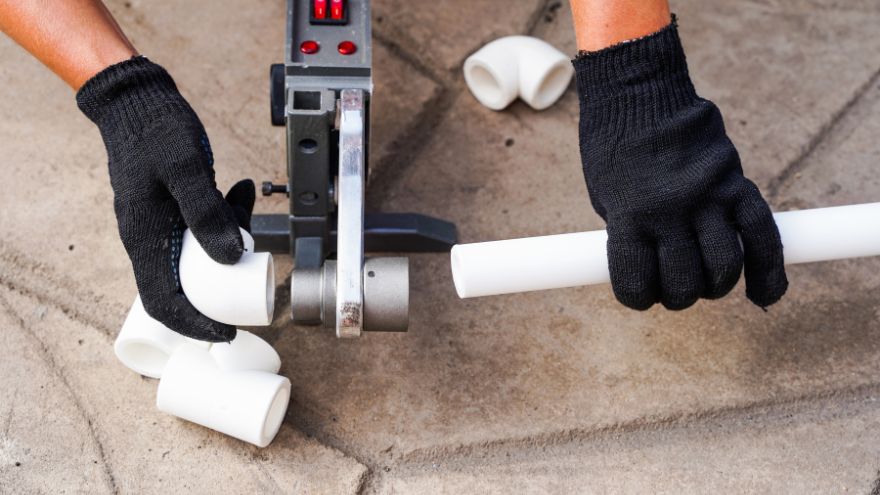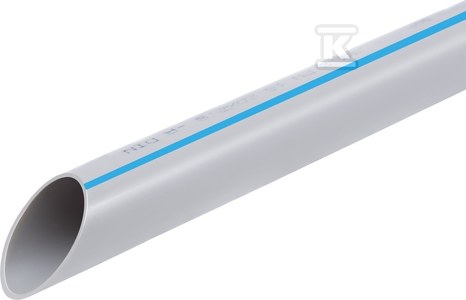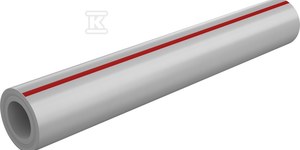PPR pipes (or PP R pipes), i.e. made of modern plastic, are currently a standard in the process of creating sanitary, central heating and cooling systems. Polypropylene pipes and fittings are characterized by very high durability and resistance to corrosion and temperature fluctuations, which translates into the efficiency and reliability of the entire installation. Get to know the most important applications and key advantages of PP R pipes and find out how to install a PPR pipe.

Check PPR pipes at the Onninen wholesaler
Application and advantages of PPR pipes
 Pipes made of plastic began to be used on a large scale in the 1960s. They gradually replaced metal systems, which are now used practically only in gas installations. The advantages of PP R pipes result from the unique properties of the material from which they are made. Random polypropylene determines their:
Pipes made of plastic began to be used on a large scale in the 1960s. They gradually replaced metal systems, which are now used practically only in gas installations. The advantages of PP R pipes result from the unique properties of the material from which they are made. Random polypropylene determines their:
- universality,
- operational durability,
- lightness,
- flexibility,
- ease and speed of assembly (it is recommended that the elements be joined by welding),
- high resistance to corrosion, breaking, abrasion and temperature fluctuations,
- complete resistance to chemical contamination,
- smooth surface that prevents scale build-up,
- insulating properties (effective suppression of vibrations and noise of flowing water),
- relatively low price.
The system based on PP R pipes is most often found in water supply networks, as well as in heating installations (closed central heating and hot water), refrigeration and technological installations. It can be installed in various spaces, including installation channels. PPR pipes are perfect for supplying cold and hot water to residential buildings and industrial facilities. They are generally not used only in underfloor heating installations.
Depending on the specific application, an appropriate pipe should be used. There are many types of PP R pipes to choose from, differing in construction, wall thickness and strength parameters. Two main groups can be distinguished:
- homogeneous PPR pipes – made exclusively of high-quality PP-R polypropylene,
- Stabilized (layered) PPR pipes – reinforced by the addition of various materials, e.g. glass fiber or aluminum insert.
Both types tolerate the same pressures. The main difference between them lies in the lower expansion coefficient of stabilized pipes, hence their frequent use in systems where there is a significant difference between the temperature of the medium (e.g. hot water) and the ambient temperature.
How to properly weld PPR pipes?
 PP-R pipes can be quickly and permanently connected by welding (so-called thermal polyfusion) using a welding machine. This method is considered by experts to be the most perfect and much more effective than twisting, clamping or gluing elements. Thanks to welding, there is no clear boundary between the elements at the connection point. No additional sealing of the weld is necessary.
PP-R pipes can be quickly and permanently connected by welding (so-called thermal polyfusion) using a welding machine. This method is considered by experts to be the most perfect and much more effective than twisting, clamping or gluing elements. Thanks to welding, there is no clear boundary between the elements at the connection point. No additional sealing of the weld is necessary.
A homogeneous "body" is created that responds to temperature changes. Thanks to high flexibility, the pipes bend easily. Installation is very simple - especially in the case of pipes with larger diameters. Welding of PP R pipes with fittings takes place at a temperature of approximately 260°C. The ends of pipes and fittings are heated and permanently connected. The welding process requires the use of a welding machine. Therefore, it is necessary to know how to use this specialized device. Heating electrodes and basic tools are also needed.
PPR pipes in the Onninen wholesaler
 In the Onninen hydraulic wholesaler you will find everything you need to create an effective, durable and reliable plastic installation - sanitary, heating, cooling or technological. Here you can buy durable PPR pipes from brands such as Onnline , Kan-Therm and Vesbo . Our assortment also includes a wide selection of PPR fittings and accessories.
In the Onninen hydraulic wholesaler you will find everything you need to create an effective, durable and reliable plastic installation - sanitary, heating, cooling or technological. Here you can buy durable PPR pipes from brands such as Onnline , Kan-Therm and Vesbo . Our assortment also includes a wide selection of PPR fittings and accessories.
Not sure which PPR pipe is best for your installation project? Contact us! We will offer individual products or comprehensive systems that meet your requirements.